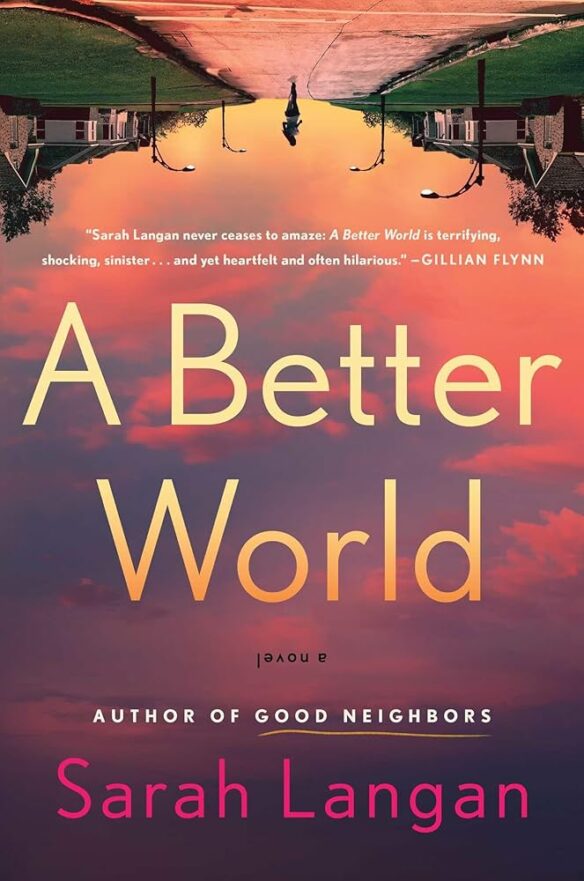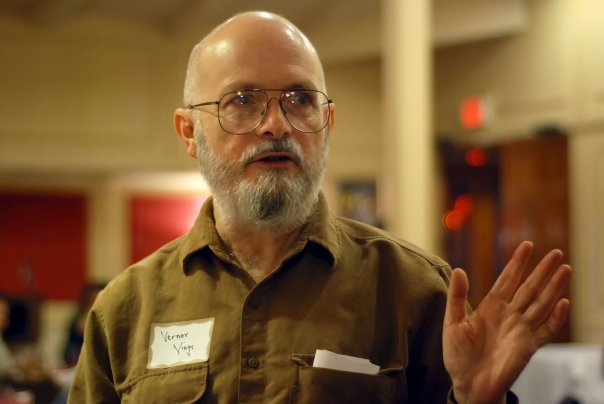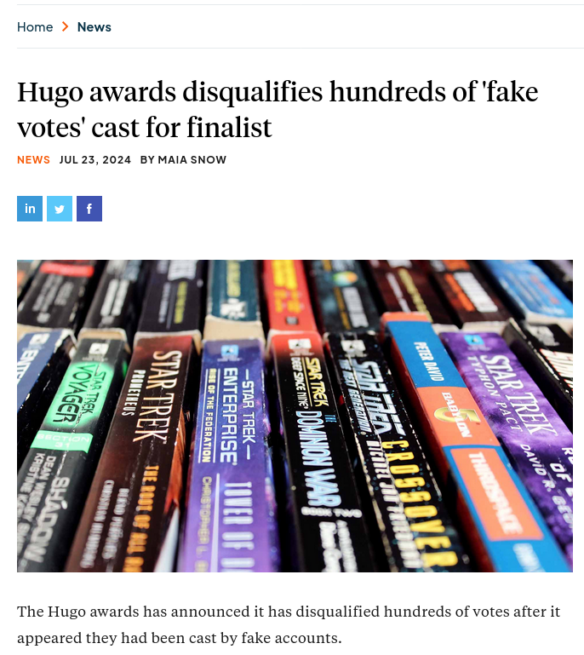(1) THE BAR’S MY DESTINATION. [Item by Mike Kennedy.] Another “distraction” for GRRM fans to complain about: “George R. R. Martin’s Cocktail Bar Brings Ancient Apothecary Vibes To Santa Fe’s Drink Scene” says Tasting Table.

…The legendary author, whose literary works have incited television shows, fervent fandoms, and plenty of food- and cocktail-related tributes (including “Game of Thrones”-inspired drinking games), has recently set his sights on a new form of creative expression.
Based in [George R.R.] Martin’s current home of New Mexico, Milk of the Poppy is a cocktail bar named for a medicinal liquid referred to in the “A Song of Ice and Fire” book series, on which HBO’s “Game of Thrones” is based. The bar boasts medieval-inspired decor with an apothecary theme, ideal for patrons to live out their fandom fantasies and responsibly partake in various libations and food offerings.
Though there have been “Game of Thrones” pop-up bars here and there over the years, one of the most unique things about this establishment is that it isn’t simply another fan-run one-off. Conceptualized by creative director Al LaFleur, the bar has been in the works for some time, even before LaFleur left Los Angeles for New Mexico. If anything, Martin’s investment in this craft cocktail bar indicates a sort of “seal of approval” from the author, whose writing heavily influenced the bar’s robust food and drink offerings.
The dungeon-like feel of the bar is reminiscent of popular “Game of Thrones” scenery, giving patrons enough reason to explore the space for a first-hand (or first-sip) experience of what it would truly be like to eat and drink as one of their favorite characters. Having opened its doors in March 2025, the bar is still relatively new to the Santa Fe bar scene, testing the potent waters of combining fantasy food and drink with real-world applications.
With a menu featuring specialty-themed, potion-like drinks, beer, wine, and a bevy of delicious appetizers, this pop culture bar will hopefully be much more than a flash in the pan, going on to thrive and connect with New Mexico locals and travelers seeking it out. Its namesake drink is a vibrant green cocktail called MOTP Milk Punch that features white armagnac, quebranta pisco, matcha, melon, calpico, and allspice that appears to be worth the visit in itself.
Although fans may be quick to criticize the author for taking longer to complete the long-anticipated “The Winds of Winter,” it’s worth remembering that true art cannot be rushed….
Website: “Milk Of The Poppy”. It’s located in Santa Fe adjacent to GRRM’s Jean Cocteau Cinema and Beastly Books.
(2) MOST PURGED BOOKS ARE AVAILABLE TO NAVAL CADETS AGAIN. AP News reports“Most books pulled from Naval Academy library are back on the shelves in latest DEI turn”.
All but a few of the nearly 400 books that the U.S. Naval Academy removed from its library because they dealt with anti-racism and gender issues are back on the shelves after the newest Pentagon-ordered review — the latest turn in a dizzying effort to rid the military of materials related to diversity, equity and inclusion programs.
Based on the new review, about 20 books from the academy’s library are being pulled aside to be checked, but that number includes some that weren’t identified or removed in last month’s initial purge of 381 books, defense officials told The Associated Press….
…The purge led to the removal of books on the Holocaust, histories of feminism, civil rights and racism, and Maya Angelou’s famous autobiography, “I Know Why the Caged Bird Sings.”
Others included “Memorializing the Holocaust,” which deals with Holocaust memorials; “Half American,” about African Americans in World War II; “A Respectable Woman,” about the public roles of African American women in 19th century New York; and “Pursuing Trayvon Martin,” about the 2012 shooting of a Black 17-year-old in Florida that raised questions about racial profiling.
The Navy on Wednesday could not confirm which books have been returned to the library or if Angelou’s book or the others will remain pulled from shelves….
Three sff works on the original list of 381 were Light From Uncommon Stars / RykaAoki; Sorrowland / Rivers Solomon; and A Psalm For The Wild-Built / Becky Chambers.
(3) AN AUGUST PRESENCE. A Deep Look by Dave Hook continues scanning the 1949 sff offerings with “’The Other Side of the Moon’, August Derleth editor, 1949 Pellegrini & Cudahy”.
The Short: The Other Side of the Moon, August Derleth editor, 1949 Pellegrini & Cudahy, includes 20 stories and an introduction by August Derleth. While I think Derleth’s definition of science fiction is somewhat different than mine, it’s mostly SF and all speculative fiction. My favorites include “Something from Above“, a novelette by Donald Wandrei, Weird Tales December 1930, and “The Earth Men“, a Martian Chronicles short story by Ray Bradbury, Thrilling Wonder Stories August 1948. My overall average rating is 3.57/5, or just below “Very good”. I recommend the twelve stories that were rated “Great” or “Very good”, but I would recommend The Other Side of the Moon itself only to those with a real enthusiasm for stories of the period….
(4) MY PRECIOUS. “PHD Students Bear the Brunt of Science’s ‘Gollum Effect’” reports Nature.
Almost half of the scientists who responded to a survey have witnessed territorial and undermining behav[1]iours by colleagues — most commonly during their PhD studies. Of those affected, nearly half said the perpetrator was a high-profile researcher, and one-third said it was their own supervisor.
Most of the respondents were ecologists, but the organizers suspect that surveys focusing on other disciplines would be similar.
The gatekeeping behaviours that the study documents “damage careers, particularly of early-career and marginalized researchers”, says lead author Jose Valdez, an ecologist at the German Centre for Integrative Biodiversity Research in Leipzig. “Most alarming was that nearly one in five of those affected left academia or science entirely.”
Valdez and his colleagues call the possessiveness shown by many researchers the Gollum effect, after a character in the book The Lord of the Rings (1954–55), whose one goal in life is to hoard an object of power for himself. The study was published in One Earth ( J. W. Valdez et al. One Earth 8, 101314 (2025)….
… Respondents described data hoarding, ideas theft by supervisors and defamation at conferences. “Collaborator has ‘reserved’ important research avenues,” wrote one respondent, “and is actively withholding data from our entire research group”. Another wrote, “I was told I wouldn’t be able to publish anything until the collaborator published their study, which has been in prep for over six years now.”…
(5) DISPUTING THE NARRATIVE. In the view of ComicBook.com, “Sandman Showrunner Sets Record Straight on Netflix Cancellation & Neil Gaiman Accusations”.
The Sandman showrunner Allan Heinberg said on Wednesday that the show was not actually canceled over the sexual misconduct allegations against Neil Gaiman. Netflix announced that this series would end with Season 2 back in January, and at the time, the accusations against Gaiman were just beginning to impact many of his adaptations. However, Heinberg told Entertainment Weekly that the streamer, the studio, and the creative team had decided to end the show shortly before Season 1 even premiered. He said that Season 2 was already in post-production when the reports about Gaiman began to circulate, so he doesn’t think it had any impact on the story or content of the new episodes. Still, he said that the announcement of the show’s ending came at “unfortunate timing, for sure.”
“It was a decision we made three years ago,” Heinberg said of the show’s cancellation. The reason, he explained, was actually the content of the original comic book by Gaiman, Sam Kieth, and Mike Dringenberg. The book often goes off on tangents about other characters, where Dream (Tom Sturridge) is only distantly involved. “There are some volumes where he just appears in two scenes,” Heinberg pointed out….
(6) MISSION CONTROL. Kotaku brings us “Mission: Impossible’s Most Impossible Missions, Ranked”.
…This past week we’ve ranked everything from Tom Cruise’s hair in each movie to the franchise’s most irreplaceable characters. In honor of The Final Reckoning dominating the Memorial Day Weekend box offices, we decided to take a different look at the Mission: Impossible franchise by ranking the movies based on the impossibility of the mission. So, before you scream about Phillip Seymour Hoffman being a better villain than any other Mission: Impossible bad guy, or how Tom Cruise didn’t risk his life falling backwards off a helicopter for Fallout not to be the best movie ever, remember, it’s all about the mission, even if you don’t choose to accept it….
The slideshow begins with Mission:Impossible II in last place, and Kotaku’s frank comment —
Not only is it the worst Mission: Impossible, it’s also the least impossible mission.
(7) A CLOCKWORK ORANGE. [Item by SF Concatenation’s Jonathan Cowie.] Yesterday’s BBC 4 Good Read saw its first 10 minutes devoted to Anthony Burgess’ A Clockwork Orange. Panellist Adrian Chiles’ parents’ Croatian ancestry came in handy when it comes to the novel’s 21st century youth slang….
This week broadcaster and writer Adrian Chiles and musician and sound artist Marty Ware join Harriett Gilbert with their reading suggestions. Martyn nominates A Clockwork Orange by Anthony Burgess which he says has influenced his career as a musician. He even named his band Heaven 17 from a reference in the book. If you can get past the brutality and violence it’s a novel that throws up many moral questions about the nature of good and evil. Both he and Adrian Chiles are fascinated by the use of Russian language throughout the book.
You can download the programme from here.
(8) MEMORY LANE.
[Written by Cat Eldridge.]
May 29, 2009 — 2081 film
So we have an interesting short film. And no, I had no idea it existed until now as one of my email newsletter had a note about a Kurt Vonnegut story being turned into a film, not completely unsurprising as one of his works did almost become an opera. So we have 2081 which is based off of his “Harrison Bergeron” story and which premiered on this date sixteen years ago at the Seattle International Film Festival.
The story was first published in the October 1961 in the Magazine of Fantasy and Science Fiction, and was in his Welcome to the Monkey House collection seven years later. Welcome to the Monkey House: The Special Edition has drafts of many of stories there.
The cast is James Cosmo, Julie Hagerty, Patricia Clarkson, and Armie Hammer.
The story is one where a future polity is attempting by any means possible to ensure that everyone is absolutely equal. Ruthlessly as the rulers of the 1984 society were doing. That’s a bit of a SPOLER I know. It’s not quite in keeping of the Vonnegut story and that’s something I’ll not say why.
So what did the critics think of it. Well I didn’t find a lot of them who said anything but I really liked what Mike Massie at the Gone with The Twins site said about this half hour film cost that just a hundred thousand to produce: “’What are you thinking about?’ ‘I don’t know.’ The basic plot, adapted by Chandler Tuttle (who also directed and edited) from Kurt Vonnegut Jr.’s short story, is sensational, serving as a warning and as pitch-black satire. The notion of equality taken to hyperbolic extremes is certainly worthy of cinematic translation, as are the various manifestations of crushing governmental control. True freedom requires disparity.”
Audience reviewers at Rotten Tomatoes really liked it giving it a seventy-five percent rating.
You can watch the trailer here.

(9) COMICS SECTION.
- Bizarro tries Little Free choices.
- Brewer Rockit unwillingly attends an alien commencement ceremony.
- Moderately Confused plays with pronunciation.
- Strange Brew depicts pressure.
- Wumo remembers Sauron’s Disco phase.
(10) KINGFISHER FOR THE ROCKET. Camestros Felapton’s Hugo reading / reviewing continues: “Hugo 2025 Novel: A Sorceress Comes to Call by T. Kingfisher”.
…Not unlike reading Alien Clay, I’m reading a book by an author I’ve read so often that I see her playing on repeated themes and elements in a new setting. Hester’s interest is the breeding of geese rather than gardening but she is very much a recurring kind of Kingfisher character, a smart, often wise, older woman who would like a peaceful life but circumstances prevent it. We are also in Kingfisher re-spinning a classic fairy tale, in this case the Brothers Grimm collected story The Goose Girl (Hester provides the connection to the geese but Cordelia is the titular girl)…
(11) ROBERT BLOCH IN THE FACE OF CHANGING TIMES. Keith Roysdon traces “The Evolution of Robert Bloch” at CrimeReads.
…Bloch, whose novel was the basis of one of the most classic of classic films, told the [Castle of Frankenstein] interviewer that he felt the same insecurities and frustrations of any writer. By the end of the 1960s, he confessed he had his struggles.
“Markets have changed. I will say quite candidly that in the past year, I’ve written five short stories – three of them haven’t been placed because the markets have changed for that sort of material. I would like to write a great deal more fiction, but there is the problem of market accountability. So I write to specification.” Bloch spoke about how things had changed since he wrote for Weird Tales and other magazines in the 1930s. “I feel the times have changed. And they change for every writer. There is no writer living who will end up 30 years later with the same market conditions and the same audience and the same media.”
Bloch was critical of himself: “I’ve always suffered from a shortage of talent. I’m very limited.” He cited his “inadequate” education and the challenge of keeping up with trends.
“Empathy is the only strength I have. The ability to put myself inside the characters and understand their motivations.”…
(12) TODAY’S THING TO WORRY ABOUT. “Film and TV model maker warns skill may disappear” reports the BBC.
A visual effects designer who worked on award-winning films and TV shows has warned the art of model-making is at risk of vanishing in the coming decades.
Mike Tucker has worked with Discover Bucks Museum in Aylesbury on an exhibition of original models and props from British science fiction shows, such as Doctor Who.
The artist, in his 60s, said he hoped the displays could inspire a future generation of visual effects artists.
“A lot of the companies, like myself, have either stopped because they’ve not been able to compete with the CGI guys, or just retired out of the business.”
“The number of us who know how to do it is getting smaller and smaller with every passing year,” he added….
…The Beyond the Stars exhibition includes models and props the Oxfordshire resident has worked on, including 1980s’ Daleks, Marvin the Paranoid Android and a model of Starbug from Red Dwarf.
Originally from Swansea, Mr Tucker entered the industry via the BBC’s in-house visual effects department in the 1980s, which closed in 2005.
He recalled: “It had over 100 members of staff when I joined. By the time we closed down we were down to 14 people, because the numbers of shows that required our particular expertise was getting smaller and smaller.
“It’s not dead completely yet. If left unchecked there is going to be a gap in about 10, 15, 20 years’ time of just finding people who know how to do it.”…
(13) MASTERS OF THE UNIVERSE AUCTION. Heritage Auctions wants the world to know about the June 5 “Masters of the Universe featuring the Artwork of Mark Taylor Action Figures & Toys Showcase Auction”.

Calling all He-Fans and She-Ravers! Whether you grew up shouting “I have the power!” or just recently fell down the rabbit hole of Eternian lore (blame that catchy theme song), now’s your chance to snag the treasures of a true toy titan.
Of the top three toy sellers in the resale market—He-Man and his colleagues in the Masters of the Universe are the toy that keeps on giving.The popularity of the brand—from a 1980s movie to the original cartoon and toy line, all the way to a new movie coming in 2026-speaks to the enduring appeal of these characters across pop culture, collectibles, and meme culture alike.
Our June 5 Masters of the Universe Showcase Auction is a love letter to the legacy of Mark Taylor—the visionary artist who gave us He-Man, Skeletor, Battle Cat, and a galaxy of unforgettable icons. This isn’t just a toy auction—it’s a trip through the nostalgia-fueled vortex of pop culture greatness.
Featured treasures include:
- The Savage/Wonder Bread He-Man Prototype First Shot (AFA 80)—a brown-haired, rough-cut warrior straight from Mattel’s pre-launch experimental phase. With ties to a long-lost “Buy 3, Get 1 Free” mail-in offer and whispers of a doomed Conan toy line, this prototype is more than rare—it’s legendary. Graded AFA 80 NM and encased in a deluxe acrylic display with a COA from Tom Derby.
But the true magic? It’s in the art:
- Original He-Man Concept Artwork by Mark Taylor – Before he became Eternia’s polished protector, He-Man was Torak, Hero of Prehistory—a barbarian bruiser in Viking armor. Taylor’s vision drew heavy inspiration from Frazetta’s fantasy epics, capturing He-Man’s raw, untamed beginnings.
- Original Skeletor Concept Artwork – Inspired by a terrifying childhood encounter with what Taylor believed was a real corpse (seriously!), early Skeletor—also known as De-Man—was gaunt, ghostly, and haunting. With bare feet, shin guards, and echoes of a “King of Styx” motif, this is the villain as you’ve never seen him: straight from the sketchbook of madness.
- Castle Grayskull Original Concept Sketch (1979) – The eerie, bone-like fortress came to life in pencil before it ever took plastic form. Signed and dated by Taylor, this haunting 24×19 inch sketch captures his dream of a fortress that wasn’t built—it grew. “I wanted it to be organic… like it’s starting to melt,” Taylor said. And you can own that vision.
Whether you’re a hardcore MOTU collector, a toy history buff, or just someone who knows a good barbarian-sorcerer rivalry when they see one, this auction is your portal to the past-and a future filled with bragging rights.
Explore the full catalog and preview all the epic lots: HA.com/49181
(14) RANKING ALL OF PHILIP K. DICK’S BOOKS. [Item by SF Concatenation’s Jonathan Cowie.] Moid over at Media Death Cult has set himself the Herculean task of ranking all of Philip K. Dick’s books….
It is not a competition but you can see whether or not you agree with him and how he tried to make some very difficult decisions….
[Thanks to Teddy Harvia, Mike Kennedy, Andrew Porter, John King Tarpinian, Chris Barkley, Cat Eldridge, SF Concatenation’s Jonathan Cowie, Mark Roth-Whitworth, Steven French, and Kathy Sullivan for some of these stories. Title credit belongs to File 770 contributing editor of the day Daniel Dern.]






































